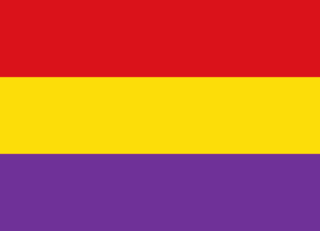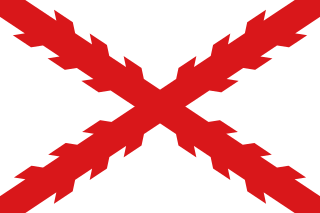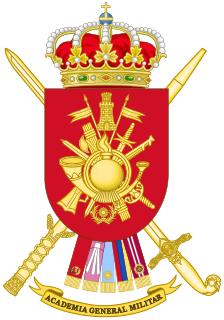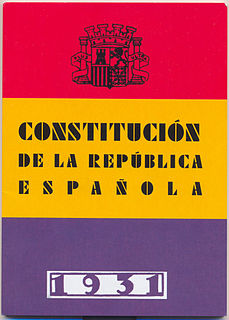 W
WThe Spanish Republic, commonly known as the Second Spanish Republic, was the form of government that existed in Spain from 1931 to 1939. The Republic was proclaimed on 14 April 1931, after the deposition of Alfonso XIII, and was dissolved on 1 April 1939 after surrendering in the Spanish Civil War to the rebel faction that would see the establishment of a military dictatorship under the rule of Francisco Franco.
 W
WNiceto Alcalá-Zamora y Torres was a Spanish lawyer and politician who served, briefly, as the first prime minister of the Second Spanish Republic, and then—from 1931 to 1936—as its president.
 W
WThe Asturian miners' strike of 1934 was a major strike action undertaken by regional miners against the 1933 Spanish general election, which redistributed political power from the leftists to conservatives in the Second Spanish Republic. The strike lasted two weeks from 4 October to 19 October 1934 in Asturias. The election led to the conservative Spanish Confederation of the Autonomous Right (CEDA), securing a parliamentary majority in the Spanish government on 6 October. The strike and subsequent demonstrations eventually developed into a violent revolutionary uprising in an attempt to overthrow the conservative regime. The revolutionaries took over the province of Asturias by force, killing a large portion of the region's inhabitants including police, religious leaders, and uncooperative civilians. Their initial entry into Asturias – armed with dynamite, rifles, and machine guns – culminated in the destruction of numerous religious institutions, such as churches and convents. The rebels officially declared a proletarian revolution and instituted their own local government in occupied territory. The rebellion was crushed by the Spanish Navy and the Spanish Republican Army, the latter using mainly colonial troops from Spanish Morocco.
 W
W¡Ay Carmela! is one of the most famous songs of the Spanish Republican troops during the Spanish Civil War.
 W
WBetween May 10 and May 13, 1931, over one hundred convents and other religious buildings were burnt by anarchists and other extreme left anticlericalists in Spain during riots that started in Madrid and spread throughout the country.
 W
WSS Cantabria was a Spanish cargo ship which was sunk in a military action of the Spanish Civil War, off the coast of Norfolk 12 miles ENE of Cromer on 2 November 1938. The ship was shelled by the Spanish Nationalist auxiliary cruiser Nadir, which was part of General Franco's navy.
 W
WCatholicism in the Second Spanish Republic was an important area of dispute, and tensions between the Catholic hierarchy and the Republic were apparent from the beginning - the establishment of the Republic began 'the most dramatic phase in the contemporary history of both Spain and the Church.' The dispute over the role of the Catholic Church and the rights of Catholics were one of the major issues which worked against the securing of a broad democratic majority and "left the body politic divided almost from the start." The historian Mary Vincent has argued that the Catholic Church was an active element in the polarising politics of the years preceding the Spanish Civil War. Similarly, Frances Lannon asserts that, "Catholic identity has usually been virtually synonymous with conservative politics in some form or other, ranged from extreme authoritarianism through gentler oligarchic tendencies to democratic reformism." The municipal elections of 1931 that triggered the establishment of the Second Spanish Republic and the Spanish Constitution of 1931 "brought to power an anticlerical government." Prime Minister Manuel Azaña asserted that the Catholic Church was responsible in part for what many perceived as Spain's backwardness and advocated the elimination of special privileges for the Church. An admirer of the pre-1914 Third French Republic, he wanted the Second Spanish Republic to emulate it, make secular schooling free and compulsory, and construct a non-religious basis for national culture and citizenship, part of the necessary updating and Europeanising of Spain.
 W
WThe Confederación Española de Derechas Autónomas, more commonly CEDA, was a Spanish political party in the Second Spanish Republic. A Catholic conservative force, it was the political heir to Ángel Herrera Oria's Acción Popular and defined itself in terms of the 'affirmation and defence of the principles of Christian civilization,' translating this theoretical stand into a practical demand for the revision of the republican constitution. The CEDA saw itself as a defensive organisation, formed to protect religion, family, and property. José María Gil-Robles declared his intention to "give Spain a true unity, a new spirit, a totalitarian polity..." and went on to say "Democracy is not an end but a mean to achieve the conquest of the new state. When the time comes, either parliament submits or we will eliminate it." The CEDA held fascist-style rallies, called Gil-Robles "Jefe", the equivalent of Duce, and claimed that the CEDA might lead a "March on Madrid" to forcefully seize power.
 W
WThe Coat of arms of the Second Spanish Republic was the emblem of the Second Spanish Republic, the democratic government that existed in Spain between April 14, 1931, when King Alfonso XIII left the country, and April 1, 1939, when the last of the Republican forces surrendered to Francoist forces at the end of the Spanish Civil War.
 W
WIn terms of electoral success Carlism of the Second Republic remained a medium-small political grouping, by far outperformed by large parties like PSOE and CEDA though trailing behind also medium-large contenders like Izquierda Republicana. During 3 electoral campaigns to the Cortes combined the Carlists seized less than 50 seats, which is below 3% of all seats available. Disorganized during the 1931 elections, the Carlist candidates were a first-choice political option for some 50,000 voters; following re-organization in successive campaigns the number grew to 420,000 (1933) and 365,000 (1936), respectively 4.9% and 3.8% of active electors. In the mid-1930s as a second-choice option the Carlists were acceptable candidates for some 1.8m voters (18%). The movement enjoyed support mostly in the Northern belt of Spain; the party stronghold was Navarre, the only region where Carlism remained a dominating force; it was a minority group still to be reckoned with in Vascongadas, Old Castile and Aragón, with rather testimonial presence in some other regions. The best known Carlist Cortes personality was Tomás Domínguez de Arévalo, who held the mandate during all three Republican terms.
 W
WThe flag of the Second Spanish Republic, known in Spanish as la tricolor, was the official flag of Spain between 1931 and 1939 and the flag of the Spanish Republican government in exile until 1977.
 W
WThe General Military Academy is a higher training center of the Spanish Army, responsible for the initial training for officers of the Arms and Corps of the Army, and for the officers of the Civil Guard. It is currently located in Zaragoza.
 W
WThe Juventudes de Acción Popular (JAP) was the youth wing of CEDA, a Spanish Catholic right-wing party in the 1930s.
 W
WLAPE, Spanish Postal Airlines (Líneas Aéreas Postales Españolas), was the Spanish national airline during the Second Spanish Republic.
 W
WThe National Defence Council was the governing body in Republican Spain at the end of the Spanish Civil War (1936–39). The council seized power with Colonel Segismundo Casado’s coup on 5 March 1939 when it was clear that the Republicans had lost the war. The leaders hoped to negotiate an end to hostilities with the rebel forces led by General Francisco Franco. Franco insisted on unconditional surrender, and on 26 March 1939 launched the final offensive of the Spanish Civil War. By the end of the month he controlled the whole country. Most of the council members escaped into exile on British warships.
 W
WThe Popular Front in Spain's Second Republic was an electoral coalition and pact signed in January 1936 by various left-wing political organizations, instigated by Manuel Azaña for the purpose of contesting that year's election. In Catalonia and today's Valencian Community the name of the coalition was Front d'Esquerres.
 W
W"Si me quieres escribir", also known as "Ya sabes mi paradero" and "El frente de Gandesa", is one of the most famous songs of the Spanish Republican troops during the Spanish Civil War.
 W
WThe Spanish Constitution of 1931 was approved by the Constituent Assembly on 9 December 1931. It was the constitution of the Second Spanish Republic and was in force until 1 April 1939. This was the second period of Spanish history in which both head of state and head of government were democratically elected.
 W
WThe Government of the Spanish Republic in exile was a continuation in exile of the government of the Second Spanish Republic following the victory of Francisco Franco's forces in the Spanish Civil War. It existed until the restoration of parliamentary democracy in 1977.